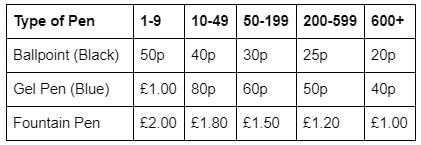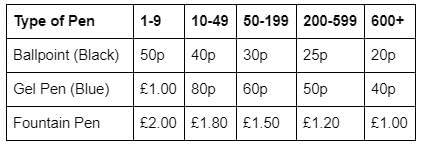UCAT Full Length Practice Test - 1 - UCAT MCQ
30 Questions MCQ Test - UCAT Full Length Practice Test - 1
Biodegradable plastics, designed to decompose naturally, are an alternative to conventional plastics. In 2024, global production reached 2.5 million tonnes, a 50% increase from 2022, driven by demand for sustainable packaging. Made from materials like corn starch, these plastics break down in 6–12 months under specific conditions, reducing landfill waste by 20%. However, production costs are 35% higher than traditional plastics, limiting adoption in low-income regions. A 2023 survey found that 65% of consumers prefer biodegradable options, but only 30% are willing to pay more. Energy-intensive manufacturing raises emissions by 12% compared to standard plastics. Recycling systems struggle to separate biodegradable plastics, complicating waste management. The EU mandates 50% biodegradable packaging by 2030, boosting investment. Innovations like enzyme-based degradation improve efficiency, but scalability is challenging. Critics argue that biodegradable plastics divert focus from reducing plastic use, while supporters see them as key to circular economies. Developing nations face infrastructure barriers, slowing progress. (270 words)
Which region has mandated 50% biodegradable packaging by 2030?
Wearable health devices, such as smartwatches and fitness trackers, monitor heart rate, sleep, and activity levels. In 2024, 1.2 billion devices were in use globally, generating $60 billion in revenue. They encourage healthier lifestyles, with 70% of users reporting improved fitness habits. Real-time data helps doctors reduce hospital visits by 12%. However, 25% of devices show inaccuracies in heart rate readings, raising reliability concerns. Privacy issues are significant, with 35% of apps sharing data without consent in 2023. Average costs of $250 limit access for low-income users. A 2024 study found that 75% of users trust wearables for basic tracking but only 45% for medical diagnoses. Regulatory standards are tightening, but enforcement is inconsistent. Japan’s subsidized programs increased adoption by 20% since 2021. Critics warn of over-reliance on devices, while supporters emphasize preventive care benefits. Limited internet access in developing regions hinders adoption. (280 words)
What is a key benefit of wearable health devices?
Wearable health devices, such as smartwatches and fitness trackers, monitor heart rate, sleep, and activity levels. In 2024, 1.2 billion devices were in use globally, generating $60 billion in revenue. They encourage healthier lifestyles, with 70% of users reporting improved fitness habits. Real-time data helps doctors reduce hospital visits by 12%. However, 25% of devices show inaccuracies in heart rate readings, raising reliability concerns. Privacy issues are significant, with 35% of apps sharing data without consent in 2023. Average costs of $250 limit access for low-income users. A 2024 study found that 75% of users trust wearables for basic tracking but only 45% for medical diagnoses. Regulatory standards are tightening, but enforcement is inconsistent. Japan’s subsidized programs increased adoption by 20% since 2021. Critics warn of over-reliance on devices, while supporters emphasize preventive care benefits. Limited internet access in developing regions hinders adoption. (280 words)
What percentage of users trust wearables for medical diagnoses, according to a 2024 study?
What is a key benefit of coral restoration?
What is a primary benefit of digital inclusion?
What is a primary benefit of urban air mobility?
What is a major limitation of UAM scalability?
All doctors trust telemedicine for accurate diagnoses.
Renewables have no impact on carbon emissions.
Autonomous vehicles reduce accidents by 30%.
All consumers trust the safety of autonomous vehicles.
Rural areas are fully prepared for autonomous vehicle infrastructure.
Urban green spaces increase local food production by 10%.
Is it true that if an employee handles budgets, they cannot be in HR?
The table gives information about the cost of buying one pen from a stationery company. VAT is charged at 20% of the total order.

Note: 100p = £1.00
If Sarah buys 150 Gel Pens (Blue), what is the total cost including VAT?
The table gives information about the cost of buying one pen from a stationery company. VAT is charged at 20% of the total order.

Note: 100p = £1.00
If Emma pays £180.00 including VAT for some Fountain Pens, how many pens did she buy?
The table shows the regular price per person and the student discounts available for different numbers of games of virtual reality gaming at an arena. Each game lasts 15 minutes. The whole arena can be booked for a private 4-game session at the rate of £25 per person with a minimum of 6 people. For a continuous session of games, there is a 15-minute break between each game.

How long will it take for a group to complete a continuous session of 2 games, including the break?
The table shows the regular price per person and the student discounts available for different numbers of games of virtual reality gaming at an arena. Each game lasts 15 minutes. The whole arena can be booked for a private 4-game session at the rate of £25 per person with a minimum of 6 people. For a continuous session of games, there is a 15-minute break between each game.

A student plans to play 1 game and then book the arena for a private 4-game session with 6 people. What is the total cost for the student, applying the student discount where applicable?
How many Angelfish spawning cycles occur in one Blue Tang growth year?
If a marine enthusiast sets up a tank for both a Clownfish and an Angelfish, what is the minimum tank size required to accommodate both comfortably?
How many more folded pies than twisted pies were produced in all batches?
How many launches would occur across all four pads in 30 minutes?
How important is the following consideration? The junior doctor is senior to you.
How appropriate is the following response in this situation? Perform the ECG provided that the junior doctor is willing to supervise you.
How appropriate is the following response in this situation? Join him and order yourself a takeaway whilst on-call too.
How appropriate is the following response in this situation? Do not offer advice as it means your rank will be better if they struggle.



















